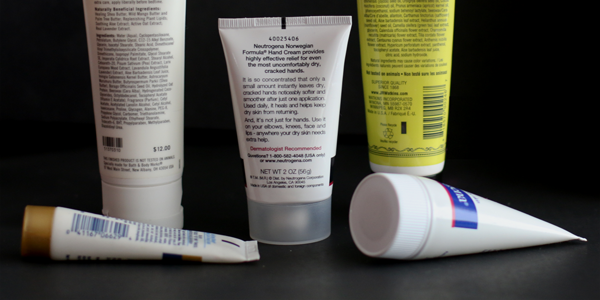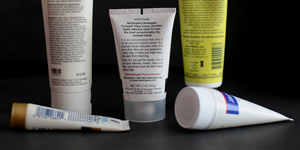Lotion Science: How Moisturizing is Your Moisturizer?
Hands-on medical biotechnology projects guide students in scientifically evaluating how common moisturizer ingredients work.

As winter weather starts creeping in, you may find yourself reaching for a grab bag of lotions and moisturizers to deal with dry and chapped hands, skin, or lips.
Store shelves are often loaded with products that claim to be the best, the most moisturizing, or the most long-acting, but all lotions are not equal when it comes to how well they moisturize human skin and how well they help lock in and preserve important oils and water. How do you know which product will really work for you?
If you base your buying decision on the product packaging that most catches your eye, on clever writing and buzzwords that may appear on the product packaging or in ads, or even on price, you may find yourself with a bottle of lotion or a tube of moisturizer for your lips that really doesn't work the way you expect.
So how should you choose? Not surprisingly, the answer lies, partly, in the list of ingredients. Just as when you head to the grocery store to buy food and read and compare nutritional info and ingredients labels, you can make a more educated decision about your moisturizer by learning more about certain key ingredients commonly found in moisturizers and how they behave when used on your skin.
Simulating Skin in a Petri Dish
In the The Skinny on Moisturizers: Which Works Best to Keep Skin Moist? medical biotechnology project, students investigate the correlation between the ingredients in various moisturizers and the effectiveness of the moisturizer. If you ask twenty people to all rub a lotion on their hands and tell you how it feels or how well it works, you may get a broad range of opinions and subjective comments. What this project helps students do is scientifically assess how well a product works. In this biotechnology project, students simulate skin (using gelatin) and then test different lotions to see what happens to the gelatin (skin) over a period of time. Specifically, students investigate the use of products containing mineral oil, glycerin, petroleum jelly, and triethanolamine to see how they affect the dryness of skin. (See the project directions for details regarding how to find appropriate moisturizers for testing.)
Doing this project, students use and practice important lab techniques, including careful record keeping and observation of petri dishes of simulated skin to which moisturizers with different ingredients have been applied. The intermediate-level project may take several weeks to complete, but at the end of the experiment, students are able to draw conclusions, based on data they have collected, about the effects of certain ingredients in moisturizers.
What moisturizers should you buy if you really want to moisturize your skin or help alleviate dryness? Have a student put it to the test. You might be surprised to find out how your favorite moisturizer performs! After doing this project, students will also be able to better evaluate a product by looking at the ingredients list on the label!
Categories:
You Might Also Enjoy These Related Posts:
- Plastics and Earth Day - Science Projects
- Arduino Science Projects and Physical Computing
- 10+ Robotics Projects with the BlueBot Kit
- 5 STEM Activities with Marshmallow Peeps
- March Madness Basketball Science Projects: Sports Science Experiments
- Women in STEM! More than 60 Scientists and Engineers for Women's History Month
- Explore Artificial Intelligence and Machine Learning with Student AI Projects
- 10 Reasons to Do the Rubber Band Car Engineering Challenge










